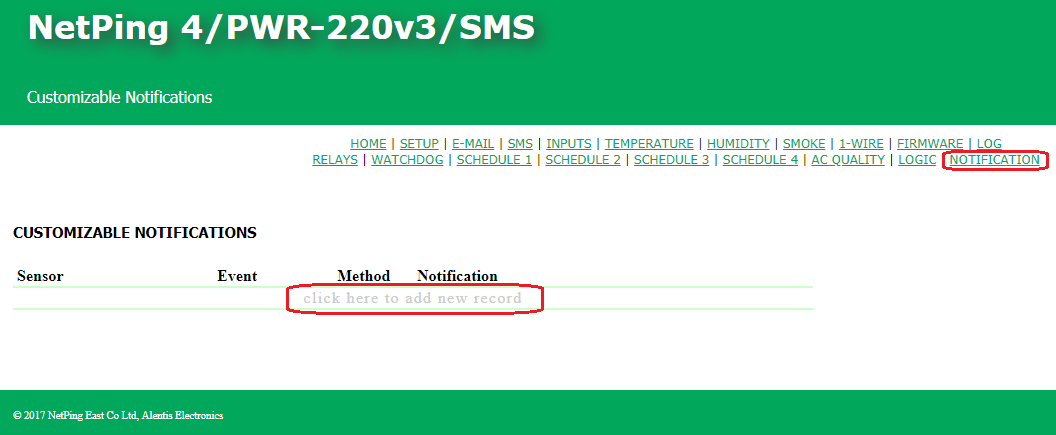[ENG] 13. [DKSF 54.3 IU] Support of Customizable Notifications by a Device
In a web interface of a device, it is possible to create SMS notifications with a random text that work in parallel with standard SMS notifications with a standard text.
In a web interface of a device, there is a possibility to create notifications that are sent through a request HTTP GET. WEBHOOK or HTTP API is an implementation mechanism of notifications about certain events that are sent to the third-party services or applications in a real-time mode. HTTP API is a much more effective solution for receiving data in a real-time mode. A device has this functionality with the aim of the simple integration with modern third-party services and applications that support this technology. For example, the integration with the automation service Zapier.com allows executing multiple actions when receiving corresponding notifications. More detailed information about possibilities provided by Zapier.com can be learned on the link https://zapier.com/zapbook/webhook/.
To create a configured notification, there is a need to go to the page «NOTIFICATION» of a device web interface and click the line «click here to add new record» (a maximum of 16 customizable notifications):
A window for configuring a notification will appear with the next parameters (on a screenshot below, an already configured notification from a temperature sensor on the channel 5 is displayed):
Sensor – a drop-down menu with a selection of a necessary sensor and its ordinal number for sending a notification from it. Possible values are: «Thermo», «Humidity (relative humidity)», «Humidity (temperature)», «Smoke», «Input», «Relay», «Watchdog», «Signal».
Event – is an event that initiates sending a notification from a selected sensor. If no events are specified in the settings, then such notification is considered inactive.
Notification Method – is a method of delivering a notification. Possible values are «SMS», «HTTP GET».
SMS Text – is a random text for an SMS notification. At the beginning of the text of a configured SMS notification, it is possible to set up to four destination addresses be indicating their numbers in square brackets separated by a comma. Numbers are specified in the format «Country_CodeOperator's_CodeDestinaton_Number». Space must be between a closing square bracket and a notification text. If destination numbers are not specified, i.e. there are no square brackets at the beginning of the text, SMS will be sent to the numbers specified in the settings on the page «SMS» of a device web interface.
URL of the request – invoked URL of a third-party service or a cloud application. To send these notifications the next pattern is used: NetPing--SNMP TRAP --> webhook.netping.ru–HTTP(URL) --> destination server. Therefore, a destination server must be addressed using a white address and it must be accessible from the outside.
It is possible to include the information related to a sensor, IO line or a relay that caused the event from a MIB branch in an SMS text or in the URL. The format is {N}, where N - is a component of SNMP OID, that stands before the index of a sensor.
For example, a text of an SMS notification «{6} - {3} ({4}°C - {5}°C), {2}°C» for a temperature sensor includes the next information from a branch of the MIB tree:
| Variable in the text | OID | Name | Description |
|---|---|---|---|
| {6} | .1.3.6.1.4.1.25728.8800.1.1.6.n | npThermoMemo.n | Memo of a temperature sensor, where n – is a number of a sensor. |
| {3} | .1.3.6.1.4.1.25728.8800.1.1.3.n | npThermoStatus.n | Status of a temperature sensor, where n – is a number of a sensor. |
| {4} | .1.3.6.1.4.1.25728.8800.1.1.4.n | npThermoLow.n | A bottom threshold of a range of normal temperature values where n is a number of a sensor. |
| {5} | .1.3.6.1.4.1.25728.8800.1.1.5.n | npThermoHigh.n | A top threshold of a range of normal temperature values where n is a number of a sensor. |
| {2} | .1.3.6.1.4.1.25728.8800.1.1.2.n | npThermoValue.n | Current temperature on a temperature sensor, where n is a number of a sensor. |

